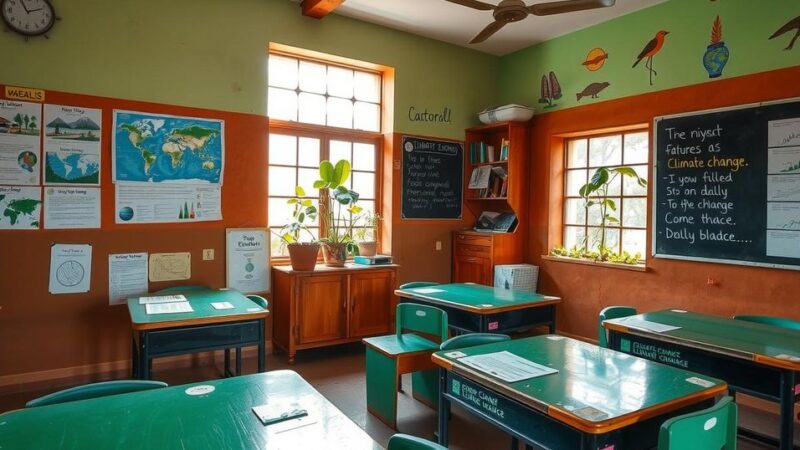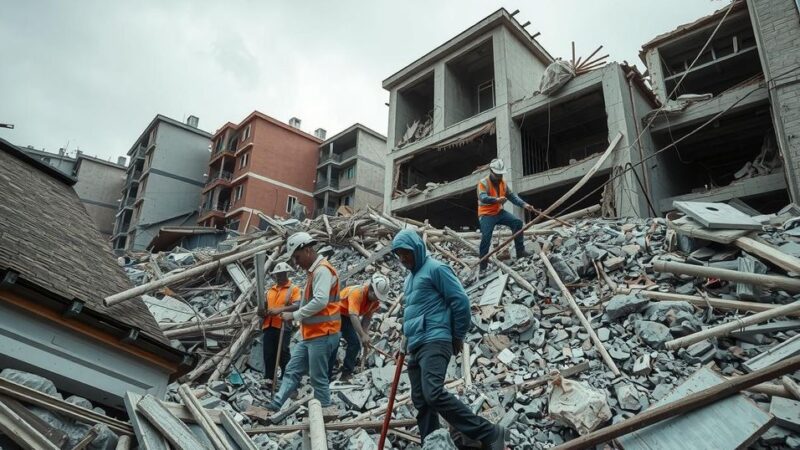Hurricane Helene wrought significant damage in regions of Virginia, Tennessee, and North Carolina, with lingering effects increasing wildfire risks. Experts highlight the ecological role of fire and the dangers posed by human-made structures in wildfire scenarios. Additionally, upcoming storm predictions suggest an above-average hurricane season, emphasizing the importance of preparedness for both hurricanes and wildfires.
Hurricane Helene, which struck last fall, caused significant damage in regions such as Southwest Virginia, Northeast Tennessee, and Western North Carolina. Months after the hurricane, communities are still engaged in recovery efforts. The hurricane’s residual effects may exacerbate the risk of wildfires in these areas, traditionally susceptible to such natural disasters during fall and spring seasons.
Michele Steinberg, the Wildfire Division Director at the National Fire Protection Association, emphasizes the ecological role of fire, stating that it can yield benefits such as nutrient restoration in soil, the removal of decaying materials, and the encouragement of certain plant species. She notes that ecosystems have adapted to natural fire cycles which facilitate the growth of both flora and fauna.
Spring and fall are typical periods for wildfire risk in the Northeast, Mid-Atlantic, and Southern states, where dry conditions can lead to wildfires even amid spring snow. Steinberg explains that the combination of fuel (from dead materials), heat, and oxygen contributes to the fire triangle necessary for wildfire ignition and spread.
Wildfires can threaten communities when human-made structures, such as homes and vehicles, become combustible materials. Tropical storms like Helene contribute to wildfire fuel loads as they uproot trees and shrubs. The aftermath of Helene presents a challenge for fire services, which must prioritize restoring infrastructure to ensure community safety.
Early warnings by emergency personnel highlighted the increased risk of wildfires due to the debris left by Helene. Historical patterns indicate that elevated wildfire occurrences can follow such natural disasters. Steinberg encourages residents to educate themselves on wildfire conditions and specific warnings issued by meteorological authorities.
Homeowners can play a crucial role in wildfire prevention by eliminating accumulated debris near their properties. Steinberg advises maintaining clear spaces within five feet of foundations and decks, as wind can transport embers from nearby wildfires to ignite fires on private property. The National Fire Protection Association offers resources and programs, such as Firewise USA, to assist communities in wildfire readiness.
Looking ahead, Colorado State University’s seasonal forecast predicts a busy 2025 Atlantic hurricane season, estimating 17 named storms, including nine hurricanes. Forecasting expert Levi Silvers attributes this expectation to higher sea-surface temperatures in storm-forming regions and the influence of a weak La Nina event, which may affect tropical development in the Atlantic.
Hurricane Helene’s impact continues to pose wildfire risks months after the storm, causing concerns for communities in affected areas. Understanding the ecological roles of fire and remaining vigilant about wildfire conditions are crucial for residents. Additionally, seasonal predictions for an above-average hurricane season suggest that preparations for wildfires and hurricanes are more critical than ever, as communities face evolving natural disaster challenges.
Original Source: www.wvtf.org






